The key to a fall backyard is to be fascinated with it within the early Spring. Succession planting, companion planting, and timing of a second planting are required for achievement. For instance, it would be best to begin your turnips if you find yourself harvesting your corn or your fall peas as you might be pulling your ripe tomatoes.
Some greens, similar to lettuce and radishes do nice with succession planting. That is including seeds to a brand new row each 5-7 days and harvesting earlier rows as they mature. Including in row covers or a hoop home are different methods to increase your gardening season.
Let’s have a look at a number of the greens you may develop within the fall, it doesn’t matter what local weather you reside in.
1. Radishes
/French-Breakfast-Radish-57c957f85f9b5829f4aa495f.jpg)
Nice for each a fall vegetable and an early Spring vegetable, radishes are robust and might survive a good quantity of publicity to chilly and frost. They’re simple to develop and mature comparatively quick with many sorts being harvested in 21-28 days. Plant radishes about 1/2 inch aside, and skinny to 1 inch when the greens come up from the bottom.
Pull radishes when they’re younger and the highest portion of the radish is about 1 inch throughout. Winter sorts of radishes similar to China Rose can keep within the floor all winter lengthy as an ideal place to retailer them. Radishes additionally make nice companion crops for zucchini, peppers and winter squashes.
2. Cauliflower

The heads of cauliflower grow to be tender and extra sturdy throughout the chilly climate. Cauliflower truly prefers cool temperatures and can solely thrive when daytime temps are lower than 80 levels. Remember the fact that harvest time for cauliflower is 85-100 days when grown from seed for beginning seeds indoors. Plant seeds 1/2 inch deep with a most of 8 seeds per 1-foot row. Skinny crops to 36 inches and hold at the very least 15 inches between rows for correct development.
Harvest cauliflower when the heads are roughly 6 inches throughout, reducing with a pointy knife. The plant will develop new, smaller heads as a alternative. To maintain worms off cauliflower, take into account planting dill across the base of every cauliflower plant.
3. Beets
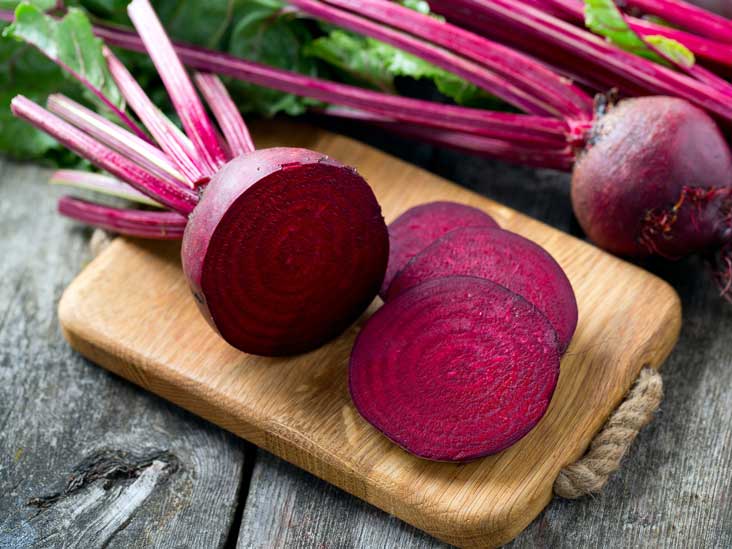
Beets are grown for his or her roots and they’re finest grown from seed. You’ll wish to begin your seeds 10 weeks earlier than your first heavy freeze. Sow seeds 3/4 inch deep, 1 inch aside. Skinny seedlings to six inches for bigger root storage in winter. Beets might be harvested 50-70 days from planting.
You possibly can enable the basis to develop a bit as you want, however bigger roots can grow to be woody and hard. Each the basis and the greens are scrumptious in recipes with the greens getting used like chard or spinach. Beets might be frozen, canned, or pickled for storage.
Associated: Storage-Pleasant Survival Gardening
4. Turnips

Often extra tender and candy within the fall, turnips additionally expertise fewer bug issues within the fall than within the Spring. Sow turnips after pulling inexperienced beans, corn, or onions as a fall crop. Broadcast seeds in full solar, masking with 1/2 depth of topsoil. Skinny crops to 4-6 inches aside with 12 inches between rows as soon as the seedlings are about 4 inches excessive.
Like beets, each the roots and the greens of turnips can be utilized. Harvest time is roughly 42-70 days, relying on selection. Harvest after the primary gentle frost for a sweeter taste. Younger turnips might be peeled or eaten such as you would eat an apple.
5. Rutabagas

Rutabagas are sometimes mistaken for turnips and they are often grown collectively. Rutabagas don’t like temps above 75 levels F, and temps which can be persistently above 80 levels may cause speedy bolting. Broadcast seeds in the identical method as turnips, however enable 2 inches between seedlings and 15-18 inches between rows.
Harvest is finest when the roots are 2-3 inches in diameter as they’re extra tender right now. For storage, minimize the greens all the way down to 1 inch from the crown and retailer at temps simply above freezing. They like a humid setting in storage with humidity ranges at 90-95%. If you want, you may go away them within the floor over the winter interval and harvest them throughout spring.
6. Cabbage
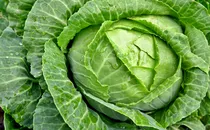
Nice for partially shaded areas of the backyard, cabbages make a fantastic fall planting. Late cabbages might be began in mid-summer, and seedlings planted 12 inches aside. In the event you select to direct sow the seeds, plant 1/2 inch deep and skinny to 12 inches when the seedlings are 3 inches excessive.
Harvest cabbages after the primary gentle frost by utilizing a pointy knife and reducing to 1 inch above the bottom. You possibly can harvest anytime after the heads type, usually after 40-50 days. Greatest storage strategies for cabbage are fermenting into sauerkraut for chilly storage or canning sauerkraut for pantry storage.
7. Parsley
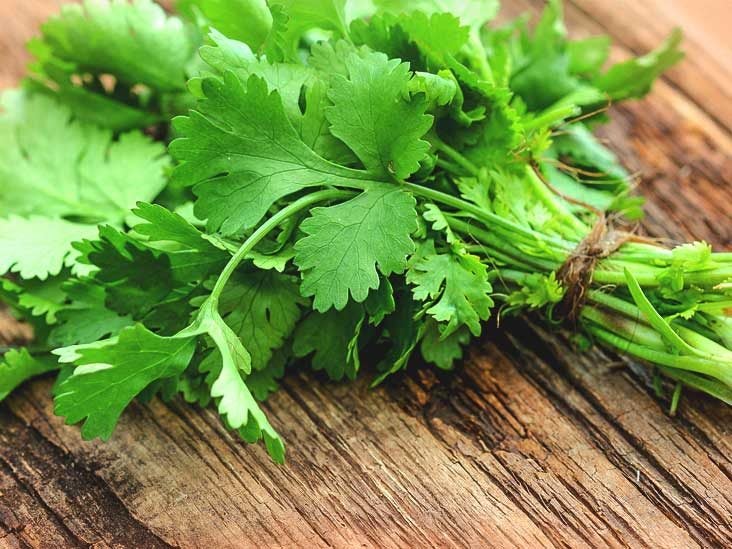
A wonderful companion for tomatoes, parsley is a winner within the fall backyard. Nice for each beds and containers, it might probably develop in each sunny and partial shade areas and might deal with gentle frost. Plan to begin your seeds 6-8 weeks earlier than your first frost, and plant 6-8 inches aside.
To reap your parsley, select the outer stems and leaves the primary 12 months to permit the plant to regrow. The second 12 months, take from the within of the plant to get extra tender components. Merely pluck together with your fingers about 2 inches from the highest of the soil. You possibly can dehydrate or freeze parsley to be used in all recipes, and it’s nice in natural teas. Add contemporary parsley to the bone broth for added minerals, too.
8. Broccoli

A member of the brassica household, broccoli is one other the most effective fall greens. It’s wealthy in nutritional vitamins, low in carbs, and has a number of versatility in culinary makes use of. For fall planting, begin your seeds 8-10 earlier than your first frost, and plant seedlings 12-24 inches aside, thinning to 24 inches with 36 inches of house between rows. Harvest time is usually 85-100 days from seed.
Like cauliflower, the heads are harvested when they’re 5-6 inches throughout. Minimize rigorously 2-3 inches beneath the top with a pointy knife, which is able to enable the heads to regrow. Broccoli might be saved within the fridge for as much as 5 days or blanched and frozen, storing for as much as 1 12 months.
Associated: 47 Gardening Hacks
9. Lettuce
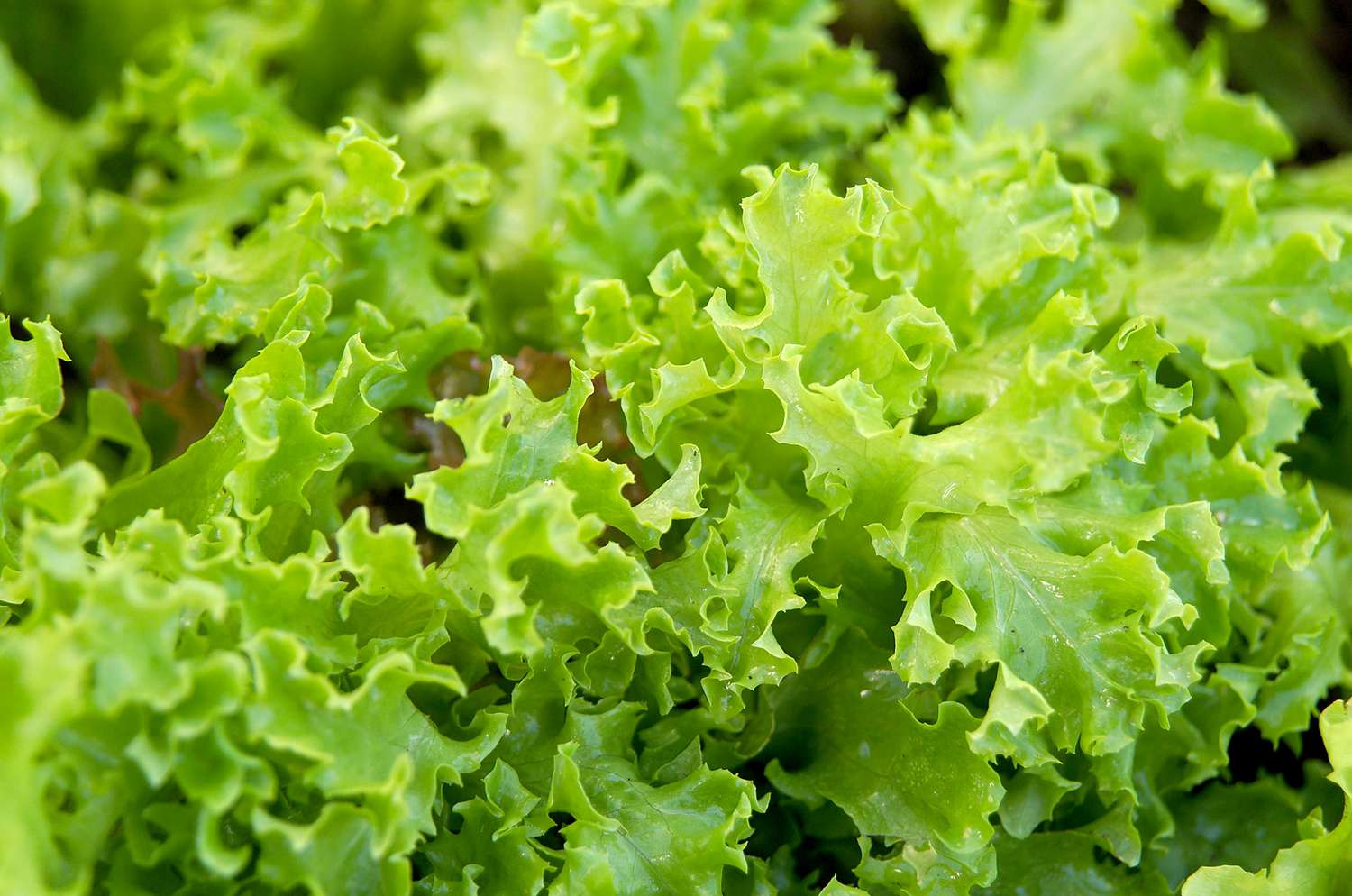
Lettuce has many sorts that may be sown all year long. It’s one other one of many fall greens that do properly in each beds and containers. Whereas it’s nice for a fall backyard, because the harvest time is usually 21-23 days, lettuce wants safety from frost. Use a hoop home or take your containers inside when frost is imminent.
For a continuous harvest, plant lettuce in succession rows, 7 days aside. Harvest lettuce by utilizing sharp scissors and reducing 2 inches above the highest of the soil to permit the plant to regrow. It’s finest to reap lettuce earlier than the warmth of the day when the solar is straight on the crops.
10. Garlic
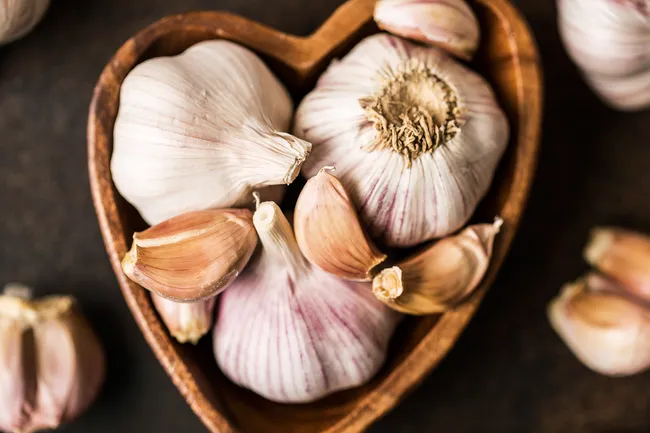
Garlic is the vegetable of hope. You plant this within the fall, about 6 weeks earlier than your first frost, and permit the plant to lie dormant all winter. Your harvest of the garlic is not going to be till the next late summer season, taking roughly 8-9 months for full development.
Plant the cloves 2-3 inches aside in rows 3 inches aside. Cowl with 1 inch of topsoil. When the shoots are 2-3 inches excessive, cowl with 6 inches of heavy straw and mulch to permit the crops to outlive the winter. Harvest the next late summer season when the greens have turned brown and seem to have died off.
Garlic is the vegetable of hope. You plant this within the fall, about 6 weeks earlier than your first frost, and permit the plant to lie dormant all winter. We might all study a lesson from garlic.
11. Kale

Wealthy in nutritional vitamins A and C, you should use kale in smoothies, salads or as greens. It may be planted in late summer season for harvest simply earlier than the primary onerous frost. A light-weight frost will make the leaves sweeter. Use a hoop home to guard crops when onerous frost is imminent for an extended harvest. To plant, broadcast about 1 cup price of seeds over at 25-foot row or 1/4 cup of seeds in a container with loamy, well-drained soil. Cowl with 1/2 inch of unfastened topsoil, then skinny seedlings 8-12 inches aside.
To reap kale, minimize leaves from the stems with a pointy knife when leaves are the scale of an grownup hand. Choose a couple of fistful of leaves per plant, avoiding the centermost leaf (the terminal) for a continued harvest. Retailer the leaves by refrigeration for as much as 5 days or by blanching and freezing for as much as 6 months.
12. Peas

Though generally an early Spring planting, peas are nice for the autumn backyard, too. They love the colder climate, and might even tolerate a little bit of snow. Though a lightweight frost is okay, use a hoop home to guard from onerous freezes. Plant your peas 6 weeks earlier than onerous frost, 1/2 inch deep and 1-2 inches aside. Skinny crops to three inches and use a trellis to help climbing crops. You possibly can benefit from the plant seedlings you thinned on sandwiches, in smoothies or salads.
Peas might be harvested in 45-60 days, relying on selection. Fastidiously pluck the pods from the stem to permit for additional development. Retailer the peas by both blanching and freezing or by canning in a strain canner.
13. Carrots
Carrots generally is a problem to develop as they want very unfastened, well-drained soil. They’re excellent for succession planting with cabbages and want full solar. Nonetheless, whenever you work the bottom to six inches deep, loosening it and including compost, the end result will likely be scrumptious, candy carrots. Sow straight within the floor or in unfastened containers. Skinny seedlings when they’re 2-3 inches excessive to 4 inches aside.
Harvest the carrots after about 55 days. You could want to drag one of many crops to test on development. Carrots might be left within the floor over the winter for harvesting contemporary. Merely mark your rows, then dig up earlier than the bottom turns into too onerous. Use succession planting to get an extended contemporary harvest and defend later crops with a hoop home.
You may as well blanch and freeze or can carrots for pantry storage. Carrot tops are scrumptious as a pesto or in salad greens as properly.
14. Leeks

The very best number of leeks for the autumn backyard are the late-season varieties similar to Surfer or Blue Solaise. Plant late season leeks within the early Spring, as they take longer to develop, roughly 100-110 days. Sow straight into the soil, masking with 1/4 inch topsoil. Shield the seeds from being washed away by Spring rains till they’re properly established. Skinny seedlings to six inches, permitting loads of house for his or her roots to develop.
Leeks will also be planted in a container, however hold them in clusters of not more than 2-3 to permit loads of room. Leeks do finest in partial shade; however may also develop properly in full solar. To guard the white stalk, you have to to cowl the crops to permit it to blanch. As soon as the plant is 3-4 inches excessive, place a bathroom paper roll or paper towel tube minimize into items over the plant. It will hold the stem from turning inexperienced.
Leeks might be saved within the floor all winter and dug up as wanted. Merely cowl with a thick layer of mulch to guard your plant. They’ll retailer within the fridge for 5-6 days however don’t do properly with canning or freezing. Dehydrating leeks is finest for longer pantry storage to take care of their texture. The dehydrated leeks go nice in soups; stews and different dishes the place an onion taste is desired.
Associated: If You Know Somebody Who’s New to Prepping, Ship This to Them
15. Collards
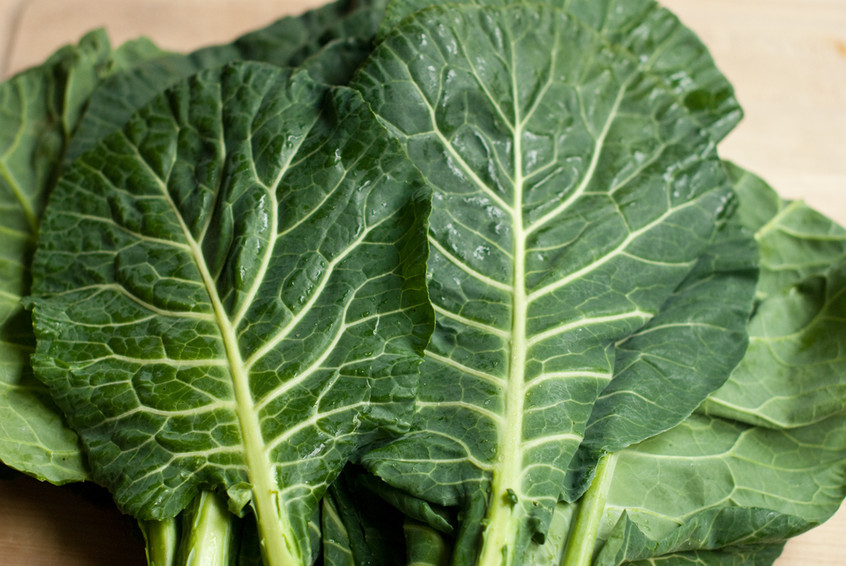
A Southern culinary custom, collards want temps beneath 75 levels F to thrive. Greater temps may cause the plant to bolt or grow to be bitter. Plant collard seeds in late summer season, 6 weeks earlier than frost. Collards want a number of room to develop, so sow seeds straight into the bottom with 24 inches between rows. Skinny seedlings to 18 inches as soon as established. Harvest time is mostly 65-70 days.
Harvest collards anytime after the leaves attain 6 inches in size by snipping with a pointy pair of scissors. Minimize 2 inches from prime of the soil, harvesting outer leaves and leaving youthful inside leaves to proceed to develop. Retailer collards by blanching and freezing for as much as 6 months or dehydrating and utilizing as chips or grinding right into a powder for including to smoothies and sauces.

